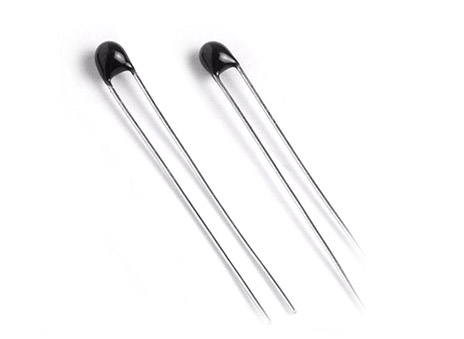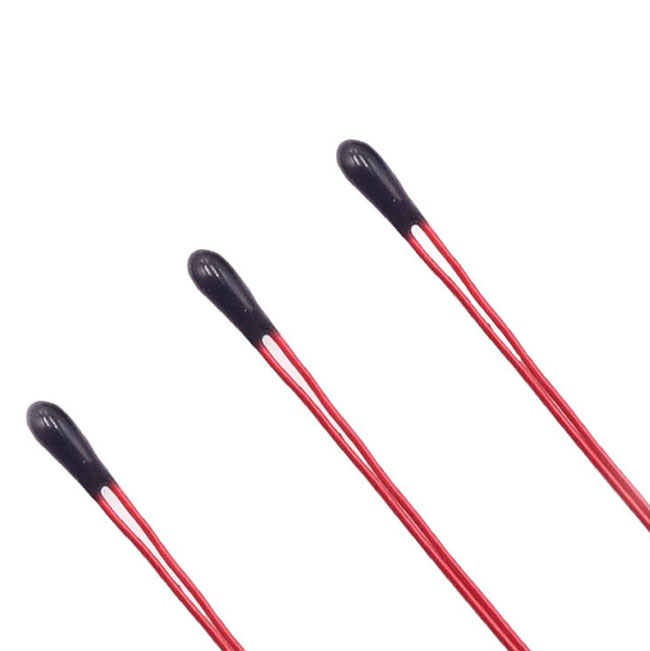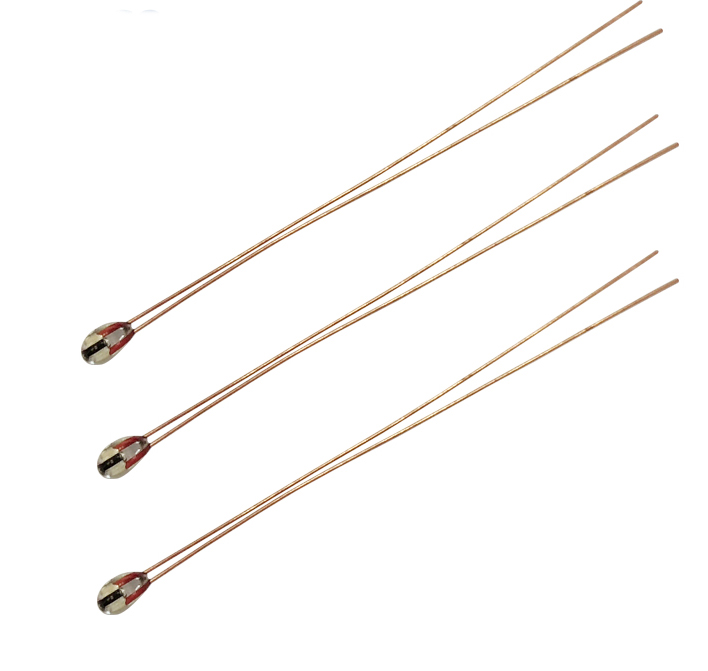The materials commonly involved in the manufacture of NTC resistors are oxides of platinum, nickel, cobalt, iron and silicon, which can be used as pure elements or as ceramics and polymers. NTC thermistors can be divided into three classes according to the production process used.
Magnetic Bead Thermistor
These NTC thermistors are made from platinum alloy leads sintered directly into the ceramic body. Compared to disk and chip NTC sensors, they generally provide faster response times, better stability and allow operation at higher temperatures, but they are more vulnerable. They are usually sealed in glass to protect them from mechanical damage during assembly and to improve their measurement stability. Typical sizes range from 0.075 to 5mm in diameter.
Enamelled Wire NTC Thermistor
Insulation coating wire NTC thermistor is MF25B series enamelled wire NTC thermistor, which is a small, high-precision insulating polymer coating of chip and enamelled copper wire, coated with epoxy resin, and NTC interchangeable thermistor sheet with bare tin-coated copper lead. The probe is small in diameter and easy to be installed in a narrow space. The temperature of the measured object (lithium battery pack) can be detected within 3 seconds. The temperature range of enamel-coated NTC thermistor products is -30℃-120℃.
Glass Encased NTC Thermistor
These are NTC temperature sensors sealed in gas-tight glass bubbles. They are designed for use in temperatures higher than 150°C, or in printed circuit board installations that must be rugged. Encapsulating the thermistor in glass improves sensor stability and protects the sensor from environmental impacts. They are made by sealing magnetic bead type NTC resistors into glass containers. Typical sizes range from 0.4-10mm in diameter.
Post time: Mar-29-2023



